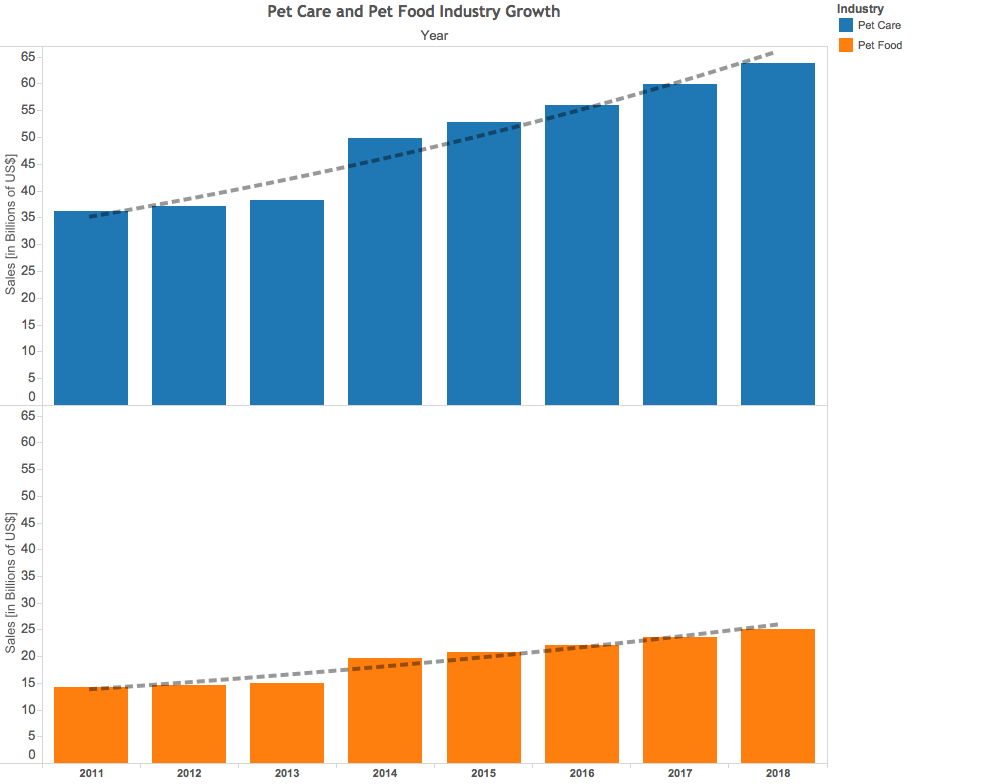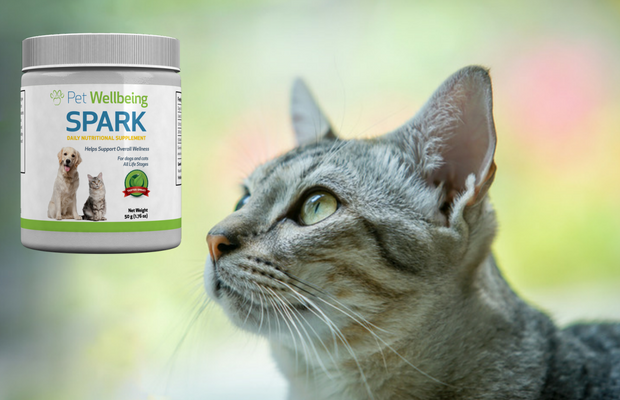
What Every Pet Owner Must Know about Pet Food Labels
Labels have been confusing to consumers and veterinarians alike. As veterinarians, we have to demystify labels to pet owners, and by doing so, we realize how many food products today have no nutritional guarantee! Meaning pets are being overfed with calories, while being undernourished because they are not getting the essential nutrients they need from commercial pet food. The one thing that everyone should be looking for on their pet food label is the Nutritional Guarantee!
The commercial pet food industry has surpassed 22 billion dollars annually reported early in 2016, while the overall pet care industry has reached 56 billion dollars. This growth highlights the demand for higher quality diets for our dogs and cats since they are now considered a part of our families.

In order to better understand labelling, we need to take a step back and understand that the regulation of pet food in America is performed through the Food and Drug Administration’s Center for Veterinary Medicine, which is also where product claims are regulated. The Department of Agriculture of each state oversees the marketing of pet foods within its own state. These officials are part of a conglomerate called the American Association of Feed Control Officials (AAFCO).
The lack of AAFCO action on food labeling to accommodate pet food consumers’ needs over the past 15 years has been disappointing, leaving the consumer and veterinarian to rely upon the ingredient list as the primary source of information related to nutritional principles.
The requirements for pet food labelling are: manufacturer’s contact information, the animal species that the food is intended for, and the net weight of product.
However, things which may not be so clearly expressed, and that need to be examined further, include:
1) guaranteed analysis
2) nutritional guarantee
3) ingredient panel
4) feeding directions
What is a Nutritional Guarantee?
The nutritional guarantee that ensures a complete and balanced diet is essential for recommending a food to a client, and we look for this on all commercial pet foods.
This statement says that the food is guaranteed complete and balanced for a specific life stage or for all life stages. This statement is substantiated based upon calculation of the nutrients included in the food, or by the food being fed to dogs for six months; if those dogs maintain their health and weight over that period, then the food can be labeled for the life stage that it was tested for. In the end, the AAFCO nutrient concentrations are rather high, therefore it is unlikely that a food calculated to have appropriate nutrient profiles would be insufficient.
To ensure that a food will be optimal for the normal healthy adolescent and adult dog or cat, there are a handful of rules that we recommend:
- Meat as a First Ingredient — meat as the first ingredient in a dog or cat food is always preferable. Typically this can be meat meals or meat byproducts, which should be considered equal, with byproduct being potentially superior due to a better vitamin and mineral profile. The digestibility is not decipherable, and we must trust the company that they are providing a 70%-plus digestible protein source.
Although we like to see fresh meat inclusion in the formula, the reality is that inclusion of fresh meat based on average extrusion techniques can only include 20–30% fresh meat in a typical kibble (more advanced extruding technology can do more), meaning that most protein is from the meals since they are a dry, stable ingredient. When listing ingredients based upon weight on the label, things like fresh poultry can be listed above rice and corn — even though the dry matter from the former is far less, typically only 35%-40%.
This can be quite confusing! Take, for example, a product that contains fresh chicken, rice, corn, barley, and animal fat listed as its first five ingredients. It would appear that most of the diet is chicken, and although this sounds good, in all reality the fresh chicken is really 65% water. The 2nd-to-5th ingredients are all dry, and thus were we to look at the dry matter of that fresh chicken, it would actually fall to the same spot in the list as the animal fat — so in this example the rice, corn and barley are actually the top three ingredients by dry weight.
- Sources of Omega-3 Fatty Acids — The latest national research council’s recommendation related to optimal health suggests that long-chain omega-3 fatty acids are required in the diet. The only sources of these long-chain fatty acids (EPA, DPA and DHA) that are beneficial to pets are from fish, shellfish or algal sources. Omega-3 fatty acids from other sources, such as flaxseed oil and canola oil, are in a shorter form and may not be as beneficial as they are not completely metabolized. Hence, looking at the label for these ingredients (in their fish oil form, not as fish meal, which has very little fat) will provide information related to their use, but not whether the amounts in the diet are sufficient. The amount of these long-chain omega-3 fatty acids in most diets is probably meeting minimal requirements, however, higher amounts can help mitigate certain inflammatory conditions in dog and cats.
- Total Dietary Fiber — This is something that is difficult to determine from reading the label or ingredient list. Most companies utilize beet pulp fiber as a mildly fermentable fiber source (primarily insoluble with a little soluble fiber). Many companies today have shied away from corn and rice, which are low in overall fiber, and have transitioned to oats, barley, and sorghum. These sources tend to have two- to three-times the fiber as traditional corn and rice, much of which is soluble. Some companies utilizing these grains are then also adding in chicory root, tomato pomace and oligosaccharides (MOS/FOS) — and may be adding in too much fiber. If a pet is having a problem with intermittent diarrhea, looking at the ingredient list to get an idea of the source of the fiber may be valuable.
- Minerals — The industry typically adds many of the vitamins and minerals that make a diet complete and balanced. The trace minerals in these pre-mixes tend to be in one or more of three different forms: oxides, sulfates, or chelates. The oxides are absorbable, except for copper and iron; these two oxides are so biologically unavailable that they cannot be used as mineral sources according to AAFCO. The sulfates are generally quite available, however, trace minerals that are chelated (to amino acids or other organic residues, e.g., acetate, gluconate, citrate) are preferred, since they may be very slightly more absorbable. Manufacturers will pay more for these organic forms even though there is little data in dogs and cats as to whether they are absorbed any better.
The overall information on most pet food labels today is still rather limited, and the total amount in the food of any ingredient down the ingredient list, can remain unknown. This is why contacting the company for information on the food, such as the amount of EPA (eicosapentaenoic acid, a long-chain omega-3 fatty acid) per kg dry matter, or per 1000 kcals, is important.
If a company cannot answer these questions, you may want to question whether they are one that you can rely upon to feed your companion appropriately!
This article is written by our Team of Advisors - Dr. Joseph J. Wakshlag DVM, PhD, DACVN, DACVSMR from Cornell University — College of Veterinary Medicine
Pet Wellbeing Recommends to add a daily nutritional supplement if your pet is on a special diet, however if you are looking for an alternative, learn more about Pet Wellbeing's Holistic Pet Food - Premium Formula for dogs and cats.
SPARK - Daily Nutritional Supplement 50g (1.76 oz)
- Healthy bones, teeth and coat
- Good digestion and nutrient absorption
- Joint and muscle health
- Immune system and normal recovery
- Healthy hormone levels
- Fighting free radical damage (anti-oxidant)
- Important vitamins & minerals for growth, aging and normal cell repair
Click to view product page to order and learn more!




